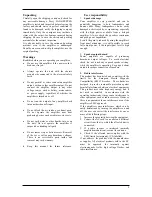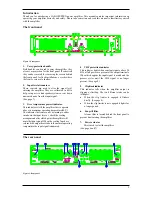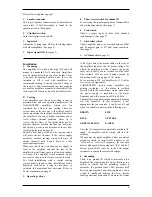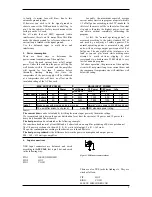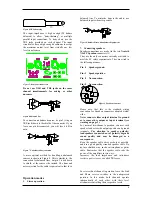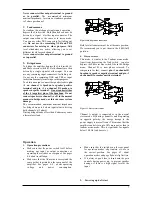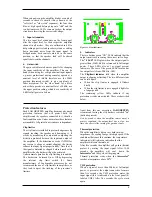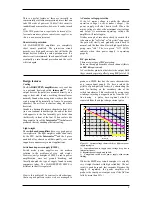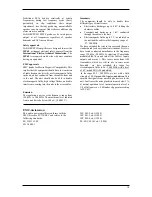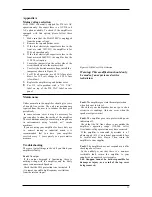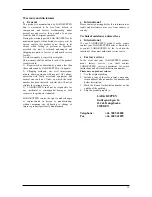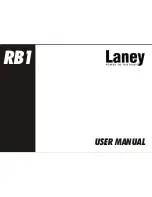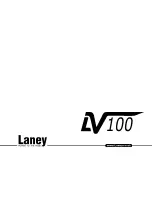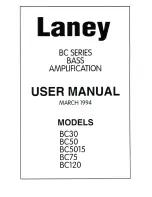
Appendix A
Mains voltage selection
LAB 1300C is normally shipped for 230 volt AC
operation only. For export there is a 115/230 volt
AC option available. To check if the amplifier is
equipped with this option, please follow these
steps:
1. Make sure that the LAB 1300C is unplugged
from the mains voltage.
2. Remove the top and bottom cover.
3. If the four electrolytic capacitors close to the
front are rated 385VDC, the amplifier is for
230 volt operation only
4. If the four electrolytic capacitors close to the
front are rated 200VDC, the amplifier has the
115/230 volt option.
5. Locate the jumper(s) on the solder side of the
circuit board close to the mains switch.
6. To select the desired mains voltage, install the
jumpers as shown in Figure 14.
7. For 230 volt operation; use a F10 A fuse (slow
blow), for 115 volt change to a F20 A fuse
(slow blow).
8.
Replace the amplifier top and bottom cover.
9.
For 115 volt operation; stick a ”115 VAC”
label on top of the 230 VAC label on rear
panel.
Figure 14. 230VAC or 115 VAC selection
Warning: This modification should only
be made of an experienced service
technician.
Maintenance
Under normal use the amplifier should give years
of trouble free service. The only user maintenance
required from the user is to vacuum the front grill
periodically.
In some extreme cases it may be necessary for
your supplier to clean the inside of the amplifier.
These conditions usually occur after prolonged use
in environments using "cracked- oil" smoke
machines.
If you are using your amplifier for heavy duty use
i.e. concert touring or industrial music it is
recommended that you have your amplifier
serviced every 3 years, purely as a preventative
measure
Troubleshooting
These are typical things to check if you think your
amplifier is faulty:
Fault
: No
output.
If the output bargraph is functioning there is
nothing wrong with the amplifier, and the likely
cause is an unsecured Speakon.
Check that the VHF protection is not activated. If
it is, remove possible high frequency oscillations
from the relevant input.
Fault
: The amplifier goes into thermal protection
when driven at low level.
Check that your loudspeaker has not got a short
circuit in its windings, (this can occur when the
speaker coil gets warm).
Fault
: The amplifier goes into protect with power
indicators off.
Check that the AC line voltage is not outside the
amplifier’s operating range (130-260 volts).
Over/under-voltage protection may have occurred.
If the amplifier is connected by mistake to a 3
phase supply (415v), an internal non-resetable fuse
or resistor may have blown. Then return the
amplifier to your supplier.
Fault
: The amplifier does not respond even after
checking above items.
In the unlikely event, that there is a non-user
rectifiable fault, return the amplifier to your
supplier or an approved service centre.
Lab Gruppen cannot be held responsible for
damage or injury, as a result of the top cover
being removed.
11


